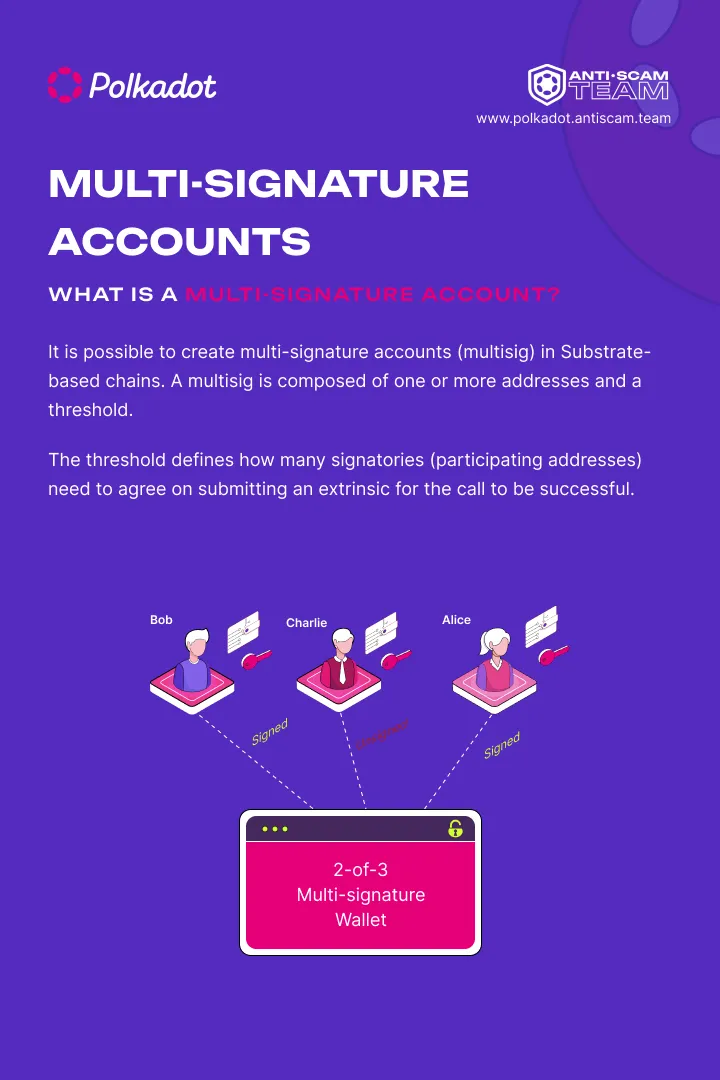Smart contracts, which are integral to the blockchain landscape, enable decentralized, trustless transactions. While they offer transformative potential by automating processes and reducing the need for intermediaries, users must be aware of inherent risks, especially from malicious actors. As we explore the challenges and intricacies of this domain, the emphasis on thorough due diligence becomes paramount.
A smart contract is a code-based agreement on a blockchain that automatically executes when certain conditions are met. Unlike traditional contracts, it operates without intermediaries and is considered by many to be a much more efficient piece of innovation. For example, imagine setting up a digital piggy bank that automatically pays your friend $10 on their birthday. Once set, you don’t touch it; the smart contract does the job when the date comes.

Smart contracts are pivotal in reshaping the world of crypto, where they have proliferated in decentralized finance (DeFi) and other areas that might be used for the trading of real-world assets. In DeFi, they automate complex financial transactions, allowing for trustless lending, borrowing, and trading on decentralized exchanges. When it comes to real-world assets tokenized into crypto, smart contracts enable the fractional ownership of assets like real estate or art. This means someone can buy a small percentage of a property or an artwork using crypto, and the smart contract ensures their ownership rights and automates any profit distributions, like rental income or resale gains. These are only a few highlights of what smart contracts are capable of.

ink! is a Rust-based framework for writing smart contracts on the Polkadot blockchain platform where smart contracts can be compiled on WebAssembly (WASM). Consequently, this means that smart contracts in the Polkadot ecosystem have been “future-proofed” for a multichain future since WASM is designed to be optimal for cross-chain communication between different blockchains. Additionally, the use of Rust as the coding language for smart contracts in this context offers a distinct advantage. While it’s possible to achieve similar levels of security with Solidity, the language used for Ethereum’s smart contracts, Rust facilitates easier verification of a contract’s behavior in line with its intended functionality. This ease of verification, rather than inherent security features, sets Rust apart, especially when compared to high-level languages like Solidity.
One important distinction of smart contracts within the Polkadot ecosystem, as compared to other ecosystems, lies in the nuanced advantages they offer. While shared security is a feature of Polkadot, it’s noteworthy that this isn’t exclusive to it; Ethereum also exhibits shared security through its rollups. However, what sets Polkadot apart is the integrated shared security provided to blockchains connected to it, enhancing the security layer of their smart contracts. Another notable aspect is the flexibility of ‘upgradeability’. In ecosystems like Ethereum, the potential for upgrading smart contracts must be incorporated at the time of deployment, as once deployed, they are immutable and require re-deployment for any changes. In contrast, the Polkadot ecosystem, particularly within its parachains, allows for a more dynamic approach where the smart contract code can be entirely swapped out via the parachain governance mechanism, offering a higher degree of adaptability and evolution over time.

Smart contracts are programmed to automatically execute actions, such as making a payment, once predefined criteria are met, operating autonomously without human intervention. However, their awareness is strictly limited to the digital realm of the blockchain. They are not just unaware of real-world events, but also lack innate knowledge of concepts like asset prices within the blockchain. The blockchain itself is only cognizant of the fact that a specific transaction occurred from a particular wallet, and the quantity of a certain token involved. To integrate external information, such as the relative value of tokens or assets, the use of oracles is essential.This is where Oracles come into play. Oracles are like helpers that give smart contracts this outside information, connecting the digital rules of the smart contract with the real world. This inherently presents opportunities for innovating away from the traditional structures of sending and receiving important information that exist today. One example is that of Chainlink, the most popular and widely adopted Oracle in crypto-space. Chainlink has provided data feeds that have been used for over USD 8.8 Trillion worth of transactional value and provides over 10 Billion on-chain data points.
A well-known member of the Polkadot community created the handy smart contract tool named “Polkadot Contract Wizard” Polkadot Contract Wizard. The Polkadot Contract Wizard elevates the coolness and uniqueness of smart contracts on Polkadot to new heights. This tool kickstarts the creation of amazing projects on Polkadot, streamlining the process of deploying smart contracts. With options to choose from standard contracts for fungible tokens (PSP22), non-fungible tokens (NFTs — PSP34), and Multi Tokens (PSP37), it offers a tailored approach to different blockchain applications. Additionally, the wizard allows for the importation of custom contracts, providing flexibility and encouraging innovation. This accessibility and customization, combined with Polkadot’s interoperable, scalable, and secure ecosystem, make it an enticing platform for developers looking to push the boundaries of blockchain technology.

Smart Contracts Risks
Despite the promising advancements smart contracts offer in crypto, they come with inherent risks that potential users must navigate carefully. Here are some of the risks:
Malicious actors can deploy smart contracts that appear legitimate, imitating any given project. They might promise high returns, promotional offers, and such enticings to lure unsuspecting users. Once users interact with these contracts, either by sending funds or providing access to their tokens, the scammers can then siphon away those assets. These scams are often spread through social media posts such as on X (formerly known as Twitter), email messages, or even search engine results.
Phishing involves luring users to fake websites or platforms that resemble genuine ones. In the context of smart contracts, phishing attackers may set up counterfeit decentralized application (dApp) interfaces or wallet login pages. Unwitting users might enter their private keys, mnemonic phrases, or login credentials, giving attackers direct access to their funds or accounts. Users must always double-check URLs and be wary of unsolicited messages prompting you to log in or provide sensitive information.
In a reentrancy attack, a malicious actor exploits a vulnerability in the smart contract’s logic. After an initial function call (like a withdrawal), the attacker manages to call the function again before the first one completes, potentially withdrawing more funds than intended. This recursive exploitation can drain a contract’s funds rapidly. For example, a user could deposit their tokens into a Decentralized Exchange’s Liquidity Pool (LP) and then later find that the funds in the pool have been drained.
In a public blockchain, pending transactions are visible in the transaction pool. Therefore, malicious actors can analyze this pool and, if they see a profitable opportunity, they can place their own transaction with a higher gas fee to ensure it gets processed first. This can allow them to benefit from price differences, often to the detriment of the original user. For example, they might preemptively buy a token before a large buy order is processed, then sell it immediately after, profiting from the price spike.
A Sybil attack involves an attacker creating multiple pseudonymous identities on a network. In the context of smart contracts and especially in governance, this can be used to disproportionately influence outcomes. For example, if a contract rewards users for providing data and uses a voting mechanism to verify data accuracy, an attacker with many identities could submit false data and then “confirm” its accuracy through the multiple fake identities.
Smart contracts can also be designed to mimic investment platforms, promising high returns to users. However, these returns are often paid out using the capital from newer participants. As more users join, initial participants receive their “returns”, creating an illusion of profitability. However, such schemes are unsustainable and eventually collapse, leading to losses for later participants. These contracts can be heavily promoted with testimonials and aggressive marketing to lure as many participants as possible before the inevitable crash. It is important to always verify the smart contract details for any red flags before engaging in “too good to be true” investment returns.
Smart contracts are deterministic and cannot access off-chain data on their own. To fetch real-world data (such as stock prices or weather data), they rely on external data providers known as oracles. If an attacker can compromise or influence these oracles, they can feed the smart contract false information, leading to unintended outcomes. For example, a smart contract that pays out insurance based on weather data might be tricked into paying out claims if the oracle falsely reports adverse weather conditions. This is a risk inherent to smart contracts that rely on oracle price data and has been a risk that is always present since it relies on the veracity of a third-party data point.

A real life example of an exploit associated with price feeds in smart contracts occurred in early 2023 when a hacker exploited a smart contract flaw in the BonqDAO, a DeFi platform on Polygon, manipulating the price feed to artificially inflate the value of the AllianceBlock Token ($ALBT). This enabled them to illegitimately mint 100 million $BEUR stablecoins. The attacker then exchanged these stablecoins for various other tokens on the Uniswap platform. This security breach was rooted in a vulnerability within the smart contract’s price feed, which was connected to the Tellor Oracle and was supposed to provide reliable price information for the $ALBT token.
Engaging with smart contracts and decentralized platforms offers exciting opportunities in the world of blockchain and finance. However, the landscape is riddled with potential pitfalls, especially when malicious actors leverage intricate tactics to exploit unsuspecting users. From scam contracts that imitate genuine projects to sophisticated attacks that manipulate the very data a contract relies on, the threats are multifaceted.

5 Essential Tasks Before Interacting With Any Smart Contract.
For users, this underscores the paramount importance of conducting thorough due diligence. Before interacting with any smart contract or platform, it’s essential to:
- Verify the authenticity of the contract’s source and its developers.
- Seek out reviews, community feedback, and expert evaluations.
- Understand the mechanics of the contract, especially if it involves financial stakes.
- Stay updated with common vulnerabilities and threats in the blockchain space.
- Always be skeptical of offers that seem too good to be true.
In a rapidly evolving ecosystem, an informed and cautious approach is your best defense against potential losses and threats. The promise of decentralized applications and smart contracts is vast, but a discerning mindset is key to safely navigating and benefiting from this frontier.




